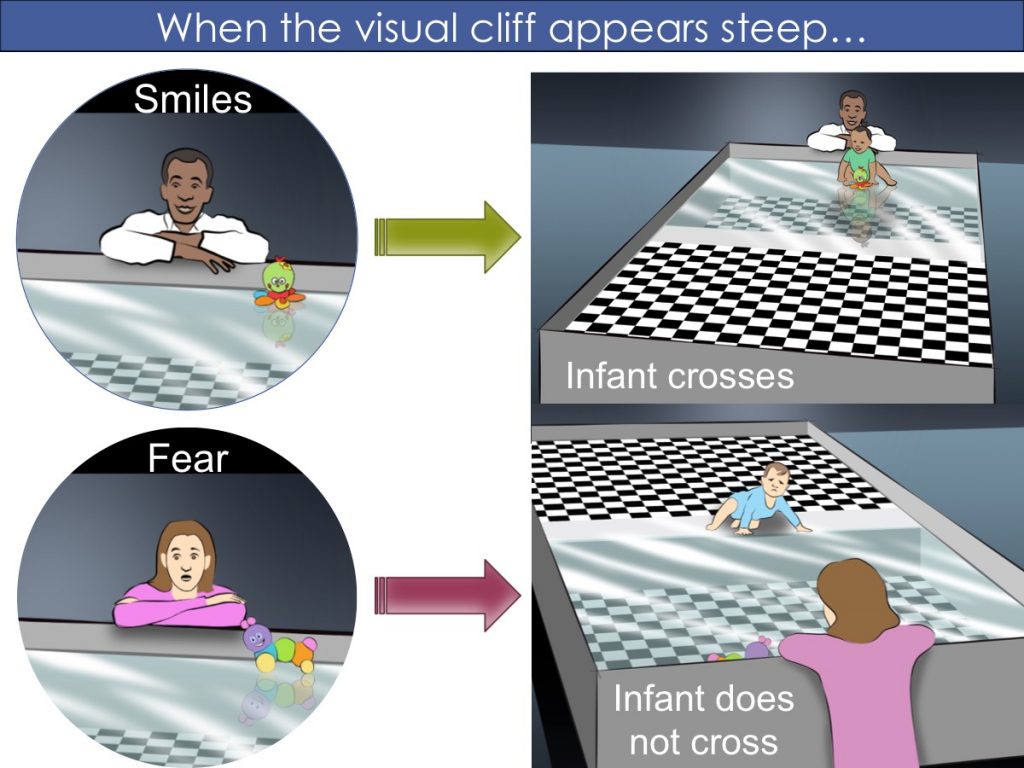
In this visual cliff experiment, most of the infants crawled to their caregiver when the caregiver smiled. However, when caregivers posed a fearful expression, most of the infants did not cross to the deep side. Researchers wondered how infants would respond to their caregiver’s fearful expression if they weren’t uncertain about what to do. To test this, researchers reduced the steep drop off to just a few centimeters to create a shallow cliff. The cliff appeared safe to infants. Nearly 75% of the infants didn’t even look to their caregiver for advice about whether it was safe to cross. When caregivers displayed a fearful expression, those children who did look to them crossed anyway. They crossed the shallow cliff because they knew they had the ability to safely cross. Infants only used their caregiver as a source of information when they were unsure what to do.
-
- Dyadic interaction
- a back-and-forth exchange between caregiver and child
- Self-regulation
- the ability to control our behaviors, emotions, and impulses
- Social emotional development
- learning to express and manage emotions and form positive relationships
- Social referencing
- looking to an adult for emotional information in an uncertain situation
- Triadic interaction
- a back-and-forth exchange between caregiver, child, and object